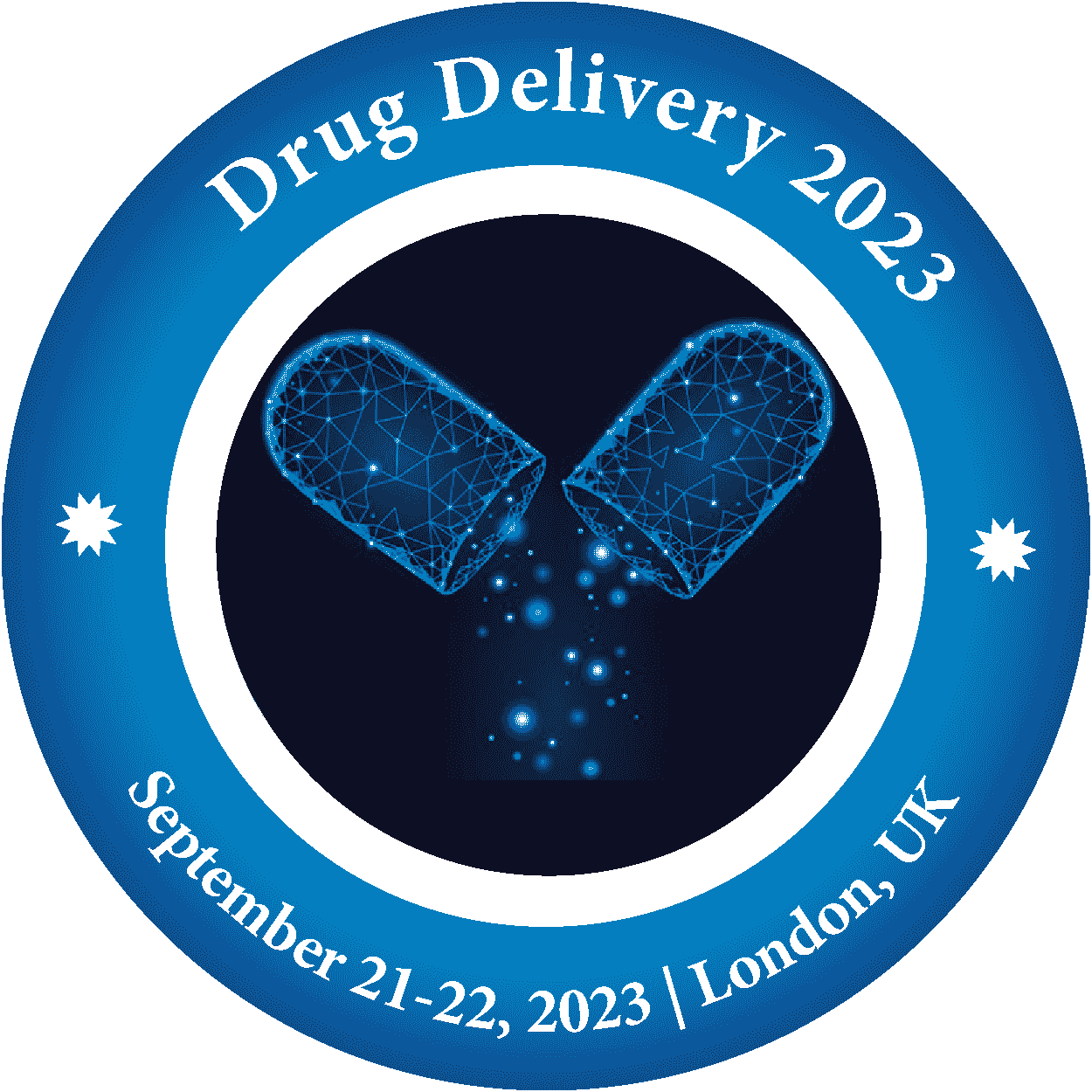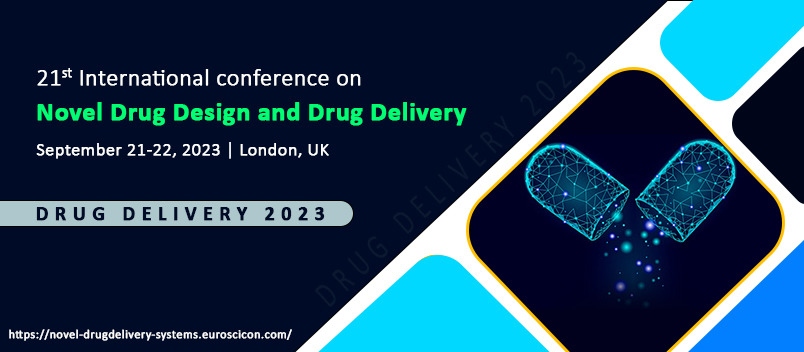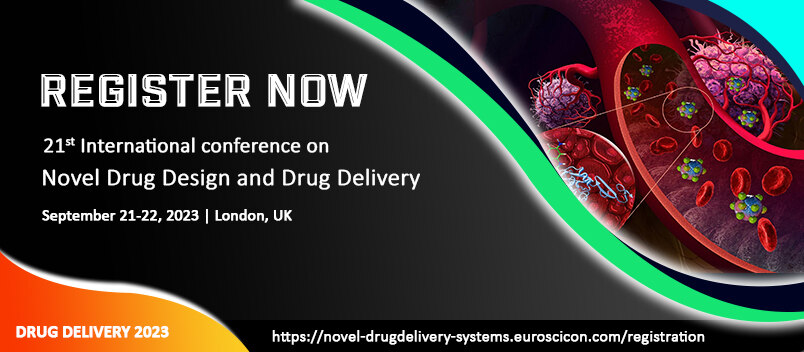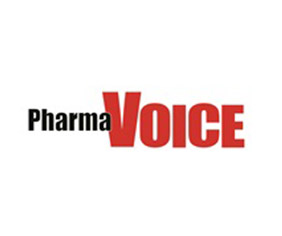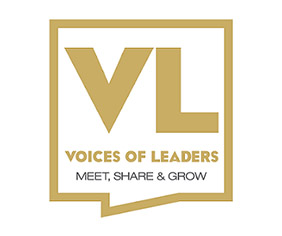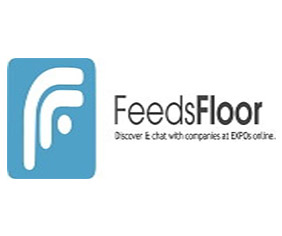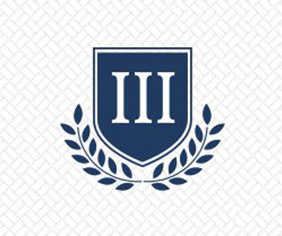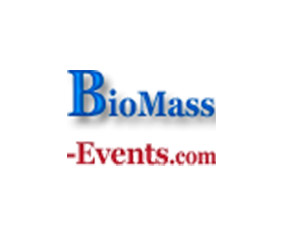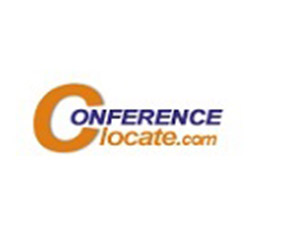Drug Delivery 2023
About Conference
EuroSciCon invites participants from all over the world to attend ' 21st International conference on Novel Drug Design and Drug Delivery” during September 21-22, 2023 at London, UK which includes prompt keynote presentations, Oral talks (Speaker Forum and Young Research Forum), Poster presentations, Symposium, Workshops and Exhibitions.
DRUG DELIVERY 2023 spreads an extensive range of critically important sessions from basic research to recent innovations. The theme: “Exploring Scientific Inquiry on Pharmaceutics and Addressing Global Issues.” is designed for professionals at all levels and career phases of the Pharma industry, who want to improve their understanding of what will drive and shape the future of the market.
What’s New?
DRUG DELIVERY 2023 offers a best stage with its proficient legitimate program to the social event of individuals which consolidates instinctive board discoursed, keynote addresses, all-hands gatherings and notice sessions on the topics Clinical Trails, Drug Discovery, Nanotechnology, current issues in Bioequivalence, Pharmaceutical Innovation, Nanomedicine, Drug transport, Gene Therapy, Therapeutic Biological Products, Pharmaceutical Packaging, BABE, Biosimilars, Drug Delivery Technologies, Drug delivery advances and challenges, Pharmacovigilance, Tissue Engineering, Regenerative Medicine, Pharmaceutical Chemistry, Pharmaceutical Analysis, new coherent approaches to managing overall managerial measures, Pharmacotherapy, Generic Drugs, Biopharmaceutical Companies and Market Analysis, The get-together invites delegates from over the globe giving a predominant stage, interconnecting the latest research, creative enhancements in the field and furthermore helpful viewpoints. This conference also provides a podium to exhibit the brand-new equipment relate to Pharma Industry for the industries and companies in which they can be benefited in the global market moreover they can upgrade their product value.
Target Audience
Nobel laureates in Health Care and Medicine
Pharmaceutical Industrial Giants
Research Institutes and members
Regulatory Operations and Affairs Outsourcing experts
Pharmacy Students
Toxicology and Pharmacology Students
Pharmacy Societies and the people Associated
Why to attend our Conference:
This event will provide an opportunity to build and expand your network with various people and gives chance to make collaboration with other universities and research labs. It also helps you to meet the experts in the relevant field of study. It gives the access to novel instruments in the market. This conference plays a major role in your business development and maximizes the profit.
Opportunities for Conference Attendees
For Researchers &Faculty:
For Universities, Associations & Societies:
For Students & Research Scholars:
Poster Competition (Winner will get Best Poster Award)
Young Researcher Forum (YRF Award to the best presenter)
For Business Delegates:
For Companies:
Marketing and Networking with clients
Scientific Sessions & Tracks
Track 1: Bio-Pharmaceutics
Pharmaceutical technology, Pharmaceutics and drug delivery, innovations in clinical development, drug design, targeted drug, gene delivery, sustained drug delivery system, routes of administration, and fundamental drug development conferences all play important roles in the drug discovery process.
Track 2: Pharmaceutical Chemistry
The study of drug design to enhance pharmacokinetics and pharmacodynamics, as well as the synthesis of novel therapeutic molecules, are all part of pharmaceutical chemistry. To put it another way, it covers a wider range of areas than medicinal chemistry in terms of the analysis, identification, and structural elucidation of pharmaceuticals. The chemical, biochemical, and pharmacological characteristics of pharmaceuticals are all covered under the field of chemistry known as pharmaceutical chemistry. It comprises drug analysis as well as synthesis/isolation, structural elucidation, structural modification, structure activity relationship (SAR) studies, chemical characteristic research, biochemical changes following drug administration, and research on the medications' pharmacological effects.
Track 3: Drug Targeting and Design
Drug Design Conferences is the creative process of discovering new pharmaceuticals based on the knowledge of a biological target. It is also known as rational drug design or just rational design. A protein, for example, is a common example of a biomolecule whose function is activated or inhibited by the medicine, which benefits the patient therapeutically. Drug design, in its most basic sense, is creating compounds that interact with and bind to biomolecular targets that are complementary to one another in shape and charge. Computer modelling methods are commonly but not always used in drug design. Computer-aided drug design is another name for this kind of modelling. The term "structure-based drug design" refers to drug development that is based on an understanding of the biomolecular target's three-dimensional structure. In addition to small molecules, biopharmaceuticals, particularly therapeutic antibodies, are a growingly significant class of medications. Computational techniques have also been developed to enhance the affinities, selectivities, and stabilities of these protein-based treatments.
Track 4: Drug Pharmacodynamics and Pharmacokinetics
The study of the timing of medication absorption, distribution, metabolism, and excretion is known as pharmacokinetics. Clinical pharmacokinetics is the application of pharmacokinetic concepts to the secure and successful therapeutic administration of medications in a particular patient. Clinical pharmacokinetics' main objectives are to improve a patient's pharmacological therapy's efficacy and reduce its toxicity. Clinicians may now apply pharmacokinetic principles to real-world patient scenarios thanks to the emergence of robust correlations between medication concentrations and their pharmacologic effects.
Track 5:Pharmaceutical Formulation:
The study of interactions among preformulation, pharmaceutical formulation, distribution, disposition, and clinical response is known as pharmaceutics. When provided in an appropriate dosage form with the excipient(s), the inherent instability of a novel medicine will change its desirable form into an unwanted form during storage. Early on, this procedure was only used to evaluate a few features. However, in modern times, it is also used as a formulation approach. As a result, considerable technological improvement has been made in this area, allowing us to save time and money.
Track 6: Manufacturing of pharmaceuticals
Drug manufacturing is the method through which pharmaceutical companies synthesise medications on an industrial scale. A number of unit operations, including milling, granulation, coating, tablet pressing, and others, can be used to breakdown the drug production process into its component parts.
Track 7: Pharmaceutical Nanotechnology
Size reduction is an essential unit function with significant pharmacy applications. It aids in boosting release, decreasing toxicity, increasing solubility and bioavailability, and offering improved medication formulation prospects. Size reduction is typically restricted to the micron size range, such as in the case of different medicinal dosage forms including powder, emulsion, suspension, etc. Various dose formulations of drugs in the nanoscale size range improve performance. The following are some of the major benefits of nanosizing: I increased surface area; (ii) enhanced solubility; (iii) increased rate of dissolution; (iv) increased oral bioavailability; (v) faster onset of therapeutic action; (vi) smaller dose required; (vii) decreased fed/fasted variability; and (viii) decreased patient-to-patient variability. Pharmaceutical nanotechnology has made it possible to diagnose diseases more precisely and treat them with greater molecular precision. Pharmaceutical nanotechnology is a highly specialised and inventive discipline that will soon alter the pharmaceutical industry. Pharmaceutical nanotechnology offers ground-breaking chances to combat various ailments. It aids in the detection of germs and viruses linked to infections as well as antigens linked to diseases like cancer, diabetes mellitus, and neurological disorders. It is anticipated that the market will be overrun by drugs created using nanotechnology in the next ten years.
Track 8: Drug Delivery Systems Using Nanoparticulates
Nanoparticles (NPs) are naturally occurring and have been around for thousands of years as byproducts of food heating and combustion. The increased surface area and quantum effects of nanomaterials make them notably different from other types of materials. These elements can improve the reactivity, strength, electrical properties, and in vivo behaviour of materials. As the particle size falls, more atoms are discovered on the surface than inside the particle. In comparison to bigger particles, NPs have a significantly higher surface area per unit mass, which increases their reactivity. Quantum effects can start to take control of matter's properties together with surface area effects as size is shrunk to the nanoscale. Amgen, Inc., AstraZeneca plc, Eli Lilly & Co., Ipsen S.A., Merck & Co., Novartis AG, Novo Nordisk A/S, Roche Holdings AG, Sanofi, Takeda Pharmaceutical Company Limited, and Teva Pharmaceutical Industries Limited are some of the major companies in the industry.
Track 9: Novel Drug Delivery Systems
A novel drug delivery system is a way to administer medication to a patient that improves the concentration of the drug relative to other bodily areas. This method of delivery is mostly based on nanomedicine, which aims to use medication administration via nanoparticles to counter the drawbacks of traditional drug delivery. These drug-loaded nanoparticles would be directed to specific areas of the body that only contain diseased tissue, avoiding contact with healthy tissue. To extend, localise, target, and have a protected medication interaction with the sick tissue is the aim of a targeted drug delivery system. While the targeted release system delivers the medicine in a dose form, the traditional drug delivery system involves the drug being absorbed through a biological membrane. The patient will need to take fewer doses more frequently, the drug will have a more consistent impact, there will be fewer adverse effects, and there will be less fluctuation in the drug levels in the blood. The system's drawback is its high price, which hinders production and limits our capacity to change dosages.
Track 10: Nanomedicine and Biomedical Applications
The majority of the advantages that have already been observed include the use of nanoparticles to alter the behaviour of therapeutic ingredients and in drug delivery. Nanomedicine is simply the uses of nanotechnology in a healthcare context. Asthma, emphysema, kidney illness, multiple sclerosis, menopausal symptoms, fungal infections, ovarian and breast cancer, and meningitis are just a few of the conditions that patients with nanomedicine conferences are used to cure and make their lives better today. With previously unheard-of control over both intracellular processes and the external environment at the nanoscale scale, nanomedicine has the potential to provide revolutionary new treatments. The Radboud Nanomedicine Alliance brings together physical scientists, physicians, and commercial partners to develop precise solutions for complex medical problems in the areas of wound healing, tissue regeneration, and mitochondrial disease. The National Nanotechnology Initiative anticipates fresh commercial uses for nanotechnology in the pharmaceutical sector, such as improved delivery methods, novel treatments, and in vivo imaging.
Track 11: Drug Delivery Using Biomaterials
Any substance that has been created to interact with biological systems for therapeutic (to treat, enhance, repair, or replace a tissue function of the body) or diagnostic purposes is referred to as a biomaterial. Biomaterials biomaterials can be obtained from nature or created in the lab using a number of different chemical techniques that make use of metallic elements, polymers, ceramics, or composite materials. They frequently serve a medical purpose and/or have been modified for this purpose; as a result, they might be all or part of a living structure or biomedical technology that replaces, augments, or performs a natural function. These purposes could be benign, like in the case of a heart valve, or they could be bioactive with a more interactive functionality, like in the case of hip implants covered in hydroxyapatite. Additionally, biomaterials are regularly utilised in medical procedures, dentistry, and drug delivery. A construct that is impregnated with pharmaceutical items, for instance, can be inserted into the body and allow for the continued release of a medicine over a long period of time. An autograft, allograft, or xenograft utilised as a transplant material is another example of a biomaterial.
Track 12: Drug Delivery Systems for Vaccines
An immunologically mediated resistance to a disease, but not necessarily an infection, is what a vaccine induces. Typically, vaccines contain DNA encoding antigenic proteins from diseases, killed or attenuated organisms, or subunits of organisms. Although extremely selective and specific when reacting with antibodies, sub-unit vaccinations frequently fail to exhibit these reactions in situations like changes in the epitopic identification centre of the antibody and are not very immunogenic. Fewer vaccination doses are required when antigens are delivered using oil-based adjuvants like Freund's adjuvant, although these adjuvants are not frequently utilised due to toxicity issues such the formation of granulomas at the injection site. Aluminum hydroxide and aluminium phosphate in the form of alum are adjuvants for human use that the FDA has approved. The formulation of antigen into delivery systems that administer antigen in particulate form rather than solution form as a result of the hunt for safer and more effective adjuvants.
The following are some additional factors that are driving the development of vaccinations as monitored drug delivery systems:
Failure to immunise with the traditional immunisation schedule of prime doses and booster doses because patients skip the latter. Delivery methods for vaccines, however:
Permit the assimilation of antigen dosages so that controlled, gradual antigen release eliminates the need for booster doses.
By encouraging their direct targeting to the immune cells, you can regulate the antigens' temporal and geographical presentation to the immune system.
Track 13: Medical Devices for Drug Delivery
In this session, we'll concentrate on medical gadgets made for delivering drugs via the nasal and pulmonary routes. These channels hold promise for local delivery, as in the case of asthma, as well as for quick medication delivery to the bloodstream and for direct distribution to the central nervous system. The intranasal and pulmonary routes have unique anatomical and physiological characteristics, which will be taken into account by the devices. Drug delivery devices are specialised equipment for administering a medication or therapeutic agent through a predetermined route. These tools are utilised in a number of medical procedures. Many in the industry have long considered that the approval procedure is too burdensome since it is, in their opinion, needlessly complicated. Its detractors assert that it prevents innovation and postpones the accessibility of better healthcare. Pharmaceutica organises medication delivery conferences all through the year to assist innovators in providing healthcare to the general population.
Track 14: Using Artificial Intelligence for Drug Delivery
Over the past ten years, interest in using artificial intelligence (AI) technology for biological or genetic analysis and interpretation, accelerated drug discovery, identification of selective small-molecule modulators or rare molecules, and behaviour prediction has grown.
Track 15: Targeted medication delivery
Targeted drug delivery is a type of drug administration that elevates the concentration of a patient's medication solely in a certain area of the body. In order to extend, localise, and have a safe pharmacological contact with the sick tissue, a targeted drug delivery system is used. The benefits of this medication delivery include: 1. a decrease in the frequency of patient dosages, 2. a consistent drug effect, and 3. a decrease in drug adverse effects. 4. lessen erratic medication levels in the blood 5.keep the body's medication levels in the tissue and plasma at their ideal levels. In chemotherapy, only a small fraction of the drug supplied really reaches the damaged organ, and over 99% of the drug does not even make it to the tumour site.
When creating a targeted drug delivery, the following factors must be taken into account: the medication's property, the drug delivery channel, the targeted site, the disease, and the drug's adverse effects. There are two types: passive targeted drug delivery, like the improved permeability and retention effect, and active targeted drug delivery, like antibodies and other drugs.
Track 16: Cutting-edge drug delivery methods
The act of introducing a medication into the body for a therapeutic effect via multiple channels is known as drug delivery. Drug delivery technology alters pharmacokinetic characteristics and drug release profiles to increase product efficacy and patient convenience. Proteins, antibodies, vaccines, and gene-based medications cannot be delivered by conventional channels because they are prone to enzymatic destruction or because they cannot be effectively absorbed into the systemic circulation because of problems with high molecular size and charge.
Track 17: Clinical Trial Supply Management
The act of introducing a medication into the body for a therapeutic effect via multiple channels is known as drug delivery. Drug delivery technology alters pharmacokinetic characteristics and drug release profiles to increase product efficacy and patient convenience. Conventional delivery methods are unable to deliver substances like proteins, antibodies, vaccines, and gene-based medicines because they are vulnerable to enzymatic breakdown or are inefficiently absorbed into the systemic circulation because of their high molecular size and charge. Technologies for non-invasive delivery include penetration matrix technology, sustained, controlled transdermal distribution, and controlled needle-free systems. Implants, nanotechnology, cell and peptide encapsulation, micro fabrication, and chemical modification are just a few of the cutting-edge technologies that have been created for efficient medication delivery.
The development of drugs that more accurately and successfully target diseases is being facilitated by breakthroughs in biotechnology.
Drugs are delivered to specific cells using nanotechnology and nanoparticles. By storing the active substance at the targeted site and avoiding booster doses, the overall medication intake and side effects are greatly reduced. Devices based on nanotechnology are less intrusive. Since their biological reaction times are substantially faster, they can be safely implanted inside the body.
Track 18: New Developments in Drug Delivery
The purpose of drug delivery systems is to deliver drugs to particular target areas of the body using a mechanism that can regulate the administration of the therapy. Researchers are utilising developments in the fields of micro- and nanotechnology to accomplish this goal. PEGylation and Depo-foam technology are recent developments in peptide and protein medication delivery systems. Current medical research involves peptides that penetrate cells and carry cargo. These peptides are known as CPPs. CPPs help carry out biological processes by delivering hydrophilic macromolecules into cells. CPPs are thought to be more effective and offer fresh opportunities for study and use in the field of life sciences because they do not compromise the integrity of cell membranes.
Systems for delivering medications to patients without the use of needles are cutting-edge methods. One of the first businesses to create a needle-free method of injecting powdered medications into the skin was PowderJect Pharmaceuticals. Inhalers, consumable goods, skin patches, and power sprays are some examples of needle-free technologies.
Transdermal patches promote patient compliance and are easy to use, simple, and painless. Drug delivery methods have been completely transformed by nanoscale components such as dendrimers, fullerenes, nanopores, nanotubes, nanoshells, quantum dots, and nanovaccines. In order to strategically design novel medication delivery systems and repurpose current ones, nanomaterial can be used.
It has been demonstrated that blood-brain barriers can be crossed by anti-cancer medications like loperamide and doxorubicin attached to nanomaterial.
Track 19: Nanoparticles: Trends and Innovations
Nanoparticles are typically less than 100 nm and made of a variety of biodegradable substances such natural or artificial polymers, lipids, or metals. Compared to bigger micromolecules, nanoparticles are more effectively absorbed by cells. Because they have a high surface area to volume ratio, nanoparticles enable the attachment of many functional groups. Due to their small size, nanoparticles can gather at specific locations. Nanoparticles have the potential to: (1) improve therapeutic efficacy and reduce negative side effects; (2) open the door to new class innovations; and (3) stimulate the re-examination of pharmaceutically suboptimal but biologically active novel compounds that were once thought to be undevelopable.
To increase the absorption of medications that are not readily soluble, nanoparticles are utilised in drug delivery.
Track 20: Drug Delivery Overcoming Difficulties
Improvements in patient compliance and acceptability, public safety, administrative expenses, and side effects are all part of innovative, non-invasive delivery. Oral administration is a non-viable delivery technique due to enzyme breakdown, acid degradation, hydrolysis, and limited permeability of intestinal epithelium in the GI tract surfaces. Proteins are supplied parenterally because oral delivery results in poor GI tract bioavailability. Obtaining acceptable and consistent bioavailability levels for oral delivery has grown more difficult. Implementing nanomedicine is also hampered by economic and financial issues. A significant barrier to the adoption of customised medicine is the restricted availability of funding by public and private health insurers for expensive new diagnostic tests. Due to their high costs and complexity, nanoproducts face even more obstacles, and cytotoxicity of nanoparticles is the main focus of next study.
The dynamics of the life science business, which includes pharmaceuticals and healthcare, are evolving as a result of advances in medical science, research, and development (R&D). New drug development accelerates the development of various drug delivery systems, which is further fueled by technological innovation, R&D, and scientific advances. New opportunities in the pharmaceutical sector are being created by improvements in our understanding of human diseases and medical therapies. There is now a need for a better medicine delivery or administration technique.
Track 21: Insulin Therapy: Understanding the pharmacology of insulin, types of insulin preparations (rapid-acting, short-acting, intermediate-acting, long-acting), insulin delivery methods, and insulin regimens for different patient populations.
Track 22: Diabetes Complications and Pharmacotherapy: Studying the pharmacological management of diabetes-related complications, such as nephropathy, retinopathy, neuropathy, and cardiovascular complications.
Track 23: Clinical Trials in Diabetes Pharmacology: Studying the design, conduct, and interpretation of clinical trials for diabetes medications, including efficacy, safety, and regulatory considerations.
Track 24: Diabetes Medications and Cultural Competence: Understanding the role of cultural factors in diabetes management and providing culturally sensitive care when prescribing medications.
Track 25: Pharmacology of Insulin and Insulin Analogs: In-depth study of the various types of insulin and insulin analogs used in diabetes management, their pharmacokinetics, and pharmacodynamics.
Track 26: Combination Therapy for Diabetes: Understanding the rationale and optimization of combining different classes of antidiabetic medications for better glycemic control.
MARKET ANALYSIS
EuroSciCon invites participants from all over the world to attend ' 21st International conference on Novel Drug Design and Drug Delivery” during September 21-22, 2023 at London, UK which includes prompt keynote presentations, Oral talks (Speaker Forum and Young Research Forum), Poster presentations, Symposium, Workshops and Exhibitions.
DRUG DELIVERY 2023 spreads an extensive range of critically important sessions from basic research to recent innovations. The theme: “Exploring Scientific Inquiry on Pharmaceutics and Addressing Global Issues.” is designed for professionals at all levels and career phases of the Pharma industry, who want to improve their understanding of what will drive and shape the future of the market.
What’s New?
DRUG DELIVERY 2023 offers a best stage with its proficient legitimate program to the social event of individuals which consolidates instinctive board discoursed, keynote addresses, all-hands gatherings and notice sessions on the topics Clinical Trails, Drug Discovery, Nanotechnology, current issues in Bioequivalence, Pharmaceutical Innovation, Nanomedicine, Drug transport, Gene Therapy, Therapeutic Biological Products, Pharmaceutical Packaging, BABE, Biosimilars, Drug Delivery Technologies, Drug delivery advances and challenges, Pharmacovigilance, Tissue Engineering, Regenerative Medicine, Pharmaceutical Chemistry, Pharmaceutical Analysis, new coherent approaches to managing overall managerial measures, Pharmacotherapy, Generic Drugs, Biopharmaceutical Companies and Market Analysis, The get-together invites delegates from over the globe giving a predominant stage, interconnecting the latest research, creative enhancements in the field and furthermore helpful viewpoints. This conference also provides a podium to exhibit the brand-new equipment relate to Pharma Industry for the industries and companies in which they can be benefited in the global market moreover they can upgrade their product value.
Target Audience
Nobel laureates in Health Care and Medicine
Pharmaceutical Industrial Giants
Research Institutes and members
Regulatory Operations and Affairs Outsourcing experts
Pharmacy Students
Toxicology and Pharmacology Students
